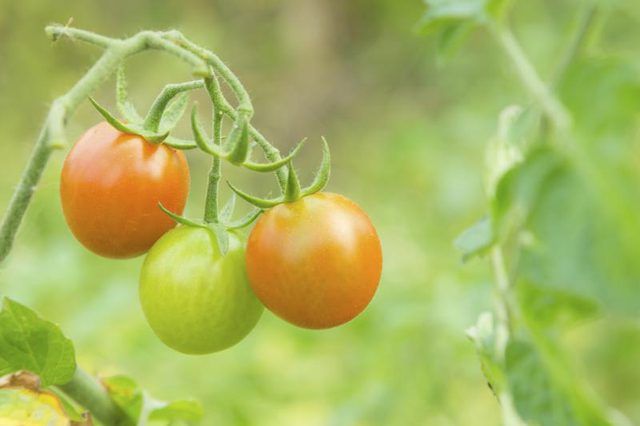Bulbs
Flower Basics
Flower Beds & Specialty Gardens
Flower Garden
Garden Furniture
Garden Gnomes
Garden Seeds
Garden Sheds
Garden Statues
Garden Tools & Supplies
Gardening Basics
Green & Organic
Groundcovers & Vines
Growing Annuals
Growing Basil
Growing Beans
Growing Berries
Growing Blueberries
Growing Cactus
Growing Corn
Growing Cotton
Growing Edibles
Growing Flowers
Growing Garlic
Growing Grapes
Growing Grass
Growing Herbs
Growing Jasmine
Growing Mint
Growing Mushrooms
Orchids
Growing Peanuts
Growing Perennials
Growing Plants
Growing Rosemary
Growing Roses
Growing Strawberries
Growing Sunflowers
Growing Thyme
Growing Tomatoes
Growing Tulips
Growing Vegetables
Herb Basics
Herb Garden
Indoor Growing
Landscaping Basics
Landscaping Patios
Landscaping Plants
Landscaping Shrubs
Landscaping Trees
Landscaping Walks & Pathways
Lawn Basics
Lawn Maintenance
Lawn Mowers
Lawn Ornaments
Lawn Planting
Lawn Tools
Outdoor Growing
Overall Landscape Planning
Pests, Weeds & Problems
Plant Basics
Rock Garden
Rose Garden
Shrubs
Soil
Specialty Gardens
Trees
Vegetable Garden
Yard Maintenance
How to Prevent Blossom End Rot in Tomatoes
How to Prevent Blossom End Rot in Tomatoes. Visions of eating luscious, homegrown tomatoes (Solanum lycopersicum) may turn to nightmares if you see your prized fruits rotting on the vines. A condition called blossom end rot causes dark areas of decay at the distal end of tomatoes. Although the damage may look like a disease has ravaged your plants,...

Visions of eating luscious, homegrown tomatoes (Solanum lycopersicum) may turn to nightmares if you see your prized fruits rotting on the vines. A condition called blossom end rot causes dark areas of decay at the distal end of tomatoes. Although the damage may look like a disease has ravaged your plants, the cause is actually rooted in a physiological disorder. You can prevent this damage and grow healthy tomatoes with some simple tweaks to the plantís environment
A Suitable Foundation
Tomato cultivars and hybrids are now available for almost every U.S. Department of Agriculture Plant Hardiness Zone, with most ranging from 5 to 11. To produce healthy and flavorful tomatoes, you must start below ground level. The soil that provides the foundation for your tomato plants must be fertile and well-draining, because waterlogged or infertile soil cannot sustain a bumper crop. Add organic matter, such as compost, to loosen heavy soils and improve the water retention of sandy soils.
Before you plant tomatoes, you can perform a simple test to make sure the soil drains properly. Dig a 1-foot-deep planting hole and fill it with water. As soon as the water drains out, immediately fill the hole again with water. After 15 minutes, measure how many inches the water level has dropped and multiply by four to determine the amount of water that drains in an hour. If the hourly rate is less than 1 inch per hour, the soil has insufficient drainage. If the rate is more than 6 inches per hour, the soil has excessive drainage.
A Drink of Water
Tomato plants become susceptible to blossom end rot when they are at the mercy of extreme fluctuations in water. Periods of drought followed by heavy rainfall (or watering) cause plant stress. Maintain uniform moisture levels by making sure plants receive 1 to 2 inches of water each week. Water deeply to moisten the entire root zone, because shallow watering does not reach all the feeder roots, which weakens the plants. Plant tomato vines through holes in black plastic sheeting or apply 2 to 3 inches of organic mulch around plants to conserve moisture.
Soil pH and Plant Nutrition
A soil pH of 6.0 to 6.5 is ideal for tomatoes. Values outside this range prohibit proper nutrient uptake, which contributes to blossom end rot. A calcium deficiency also promotes blossom end rot. The deficiency may be from the absence of calcium in the soil or too much magnesium or potassium, which are nutrients that compete with calcium and prevent its uptake by plants.
When you plant tomatoes, apply fertilizer based on soil test recommendations. If you didnít test the soil, apply a starter fertilizer to the new transplants. Make the fertilizer by mixing 2 tablespoons of 5-10-10 fertilizer in 1 gallon of water, applying 1 pint around each plant. When plants produce their first 2-inch diameter fruits, sprinkle 1 tablespoon of 21-0-0 nitrogen fertilizer in a circle 12 to 20 inches wide around each plant, and reapply at the same rate every month until the end of the growing season.
Foliar Sprays
Foliar sprays, which contain calcium to mitigate the calcium deficiency that promotes blossom end rot, are typically ineffective. A plant uptakes calcium from the soil through its roots and delivers it through its xylem to the stems, leaves and fruit. If you apply calcium on the leaves with a foliar spray, the calcium does not reach the decaying fruit because it cannot move from the leaves downward. Apply any needed calcium to the soil in a granular or water-soluble fertilizer.